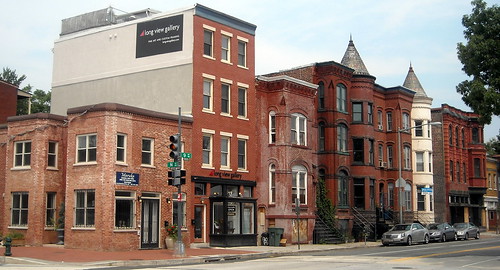 |
| Image Credit: Bend Bulletin |
The urban/rural divide, so prevalent in discussions surrounding economic growth in developing countries, seems to have long since left its seat at the great panel of the affordable housing debate in the U.S. While HUD's Rural Housing and Economic Development division and the U.S. Department of Agriculture's Rural Development program's
Section 515 subsidized nearly 500,000 rental units in rural areas, these buildings- mostly constructed during the 1970s- are in bad need of maintenance and cannot meet the increased demand for affordable housing outside of metropolitan regions. Section 515 housing is often located in areas disconnected to the capital and resources available to subsidized properties in cities and owners of Section 515 units cannot adequately address the quality control issues of their properties on the $500/month subsidy provided by the USDA. While inadequacies in rural affordable housing usually become apparent during financial strain, with larger numbers of rural renters considered "
cost burdened" by housing expenses, the lack of affordable options is perhaps most acute in the current oil
boomtowns like Williston, N.D. that dot the Upper Midwest.
Williston has become the media poster child for overnight success stories rising up from the dusty Great Plains. The population of the town, which is located near the confluence of the Yellowstone and Missouri Rivers in northwest North Dakota, has risen from 12,000 in 2000 to as high as an estimated 30,000 (including those living in temporary housing) at the end of last year. While the influx of people has sparked life into the area economy and service sector (unemployment was less than 1% last year), it has also led to
concerns about a serious shortage of affordable housing and rising homelessness rates. The small North Dakota town, not previously a focus for housing and development agencies, is now commanding rapid attention.
 |
| Image Credit: Medill Energy |
Out-of-towners seeking high-paying oil field jobs have heightened demand for housing in the town and, consequently, Williston rents have skyrocketed in the past three years- in some cases, to five and six times there previous rates. In many cases, locals and those not employed in the oil industry have seen their wages increase but not nearly enough to cover mounting housing expenses. Those that can find a place to rent often have to share small, substandard units with several roommates. The national attention lavished on Williston and much of North Dakota in the wake of the economic boom turned to skepticism about the area's ability to provide adequate housing to its residents and, as a result, led to the construction of hundreds of new affordable housing
units and the direction of funds from the HUD Housing Rehabilitation Program to preserve and maintain decades-old units. Meaningful coordination between the HUD Fargo Field Office, USDA, and the
Dickinson/Williston Community Action Partnership is also developing new solutions to housing and social services shortages and preparing for future regional demographic shifts.
While boomtowns like Williston present unusual scenarios in which rural affordable housing shortages are revealed, it should not take skyrocketing rents and a vacuum of housing availability to turn housing advocates' attention toward rural areas. The affordable housing needs of America's urban communities and, increasingly, suburban and exurban areas, are extremely important but rural communities suffer from poverty and neglect that is often far from the sight of policymakers in urban locations. The lessons learned and inter-agency partnerships formed from Williston should serve as a future blueprint for managing affordable housing demands- and improving the quality of the supply- in those many areas beyond the beltways, bridges, and bike lanes.






